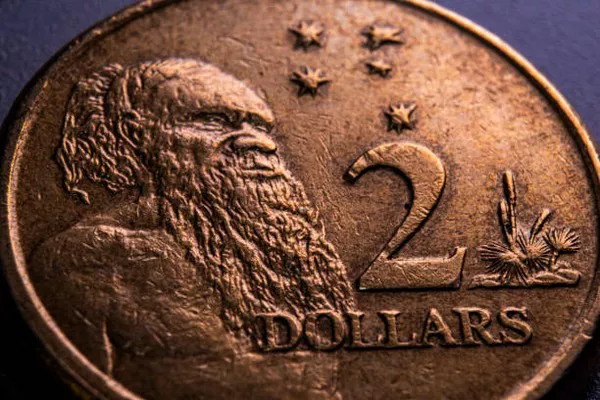Australia’s currency, like that of many nations, reflects its history, culture, and notable figures. The Australian dollar (AUD) is the official currency, subdivided into 100 cents. Denominations range from the humble 5-cent coin to the substantial $100 note, with each note featuring significant figures and symbols emblematic of Australia’s heritage and identity.
Historical Figures on the $10 Note
The $10 note in Australia prominently features the portraits of two esteemed individuals: Dame Mary Gilmore and AB ‘Banjo’ Paterson. Both figures have left indelible marks on Australian culture, literature, and society.
Dame Mary Gilmore, born in 1865, was a revered poet, journalist, and social reformer. Her works often explored themes of social justice, equality, and the Australian landscape. Gilmore was a vocal advocate for the rights of women, indigenous Australians, and the working class. Her poetry, including the iconic “No Foe Shall Gather Our Harvest,” captured the spirit of resilience and unity during times of hardship.
AB ‘Banjo’ Paterson, born in 1864, is one of Australia’s most celebrated poets and writers. Renowned for his bush ballads, including the immortal “Waltzing Matilda” and “The Man from Snowy River,” Paterson’s works evoke the rugged beauty of the Australian outback and the ethos of the bush. His writing embodies the larrikin spirit, humor, and resourcefulness synonymous with Australian identity.
Both Gilmore and Paterson were chosen for their significant contributions to Australian literature and culture. Their enduring legacy continues to resonate with Australians, inspiring generations with their words and ideals.
Design and Symbolism
The design of the $10 note incorporates various elements that reflect Australia’s natural beauty and cultural heritage. The front of the note features portraits of Dame Mary Gilmore and AB ‘Banjo’ Paterson, surrounded by intricate patterns and motifs.
One prominent design element is the Bramble Wattle (Acacia victoriae), a native Australian plant known for its vibrant yellow flowers. The inclusion of the Bramble Wattle symbolizes resilience, strength, and the beauty of the Australian landscape.
Another notable feature is the Sulphur-crested Cockatoo (Cacatua galerita), a distinctive bird native to Australia. The Sulphur-crested Cockatoo represents the rich biodiversity of Australia’s fauna and serves as a symbol of freedom and endurance.
Together, these design elements encapsulate the essence of Australia’s natural environment and cultural identity, celebrating its unique flora and fauna.
Security Features
To combat counterfeiting, the $10 note incorporates several advanced security features. These include:
Microprint: Tiny text hidden within the design, visible only under magnification.
Watermark: A unique image, such as a portrait or symbol, visible when held up to light.
Holographic Strip: A metallic strip containing holographic images that shift and change when tilted.
UV Features: Fluorescent elements visible under ultraviolet light, serving as additional authentication.
These security features help ensure the integrity of the currency and maintain public trust in the financial system.
Cultural Impact
The inclusion of Dame Mary Gilmore and AB ‘Banjo’ Paterson on the $10 note reflects their profound influence on Australian society and culture. Their literary contributions have shaped the national identity, fostering a deeper appreciation for Australia’s history, landscape, and values.
Gilmore’s advocacy for social justice and equality continues to inspire movements for change, while Paterson’s bush poetry remains a beloved part of Australia’s cultural heritage. Their words have transcended generations, resonating with Australians from all walks of life and cementing their place in the nation’s collective memory.
Changes Over Time
Since its introduction, the $10 note has undergone several changes to enhance security and durability. In 2017, the Reserve Bank of Australia released a new polymer $10 note featuring updated security features and a refreshed design, including tactile elements to assist the visually impaired.
Throughout its history, the $10 note has evolved alongside advancements in printing technology and security measures, ensuring its continued integrity and reliability in circulation.
Collectability and Circulation
While primarily used as a medium of exchange in daily transactions, the $10 note also holds significance for collectors. Collectors may seek out specific serial numbers, variations, or historical editions of the note, adding to its value beyond its face value.
In circulation, the $10 note plays a vital role in facilitating economic transactions and commerce. Its widespread use reflects the stability and confidence in the Australian economy, underpinning everyday financial activities across the country.
See also Should I Take Cash or Card to Australia?
Conclusion
The $10 note in Australia serves as more than just a means of payment; it is a tangible representation of the nation’s history, culture, and values. Featuring the portraits of Dame Mary Gilmore and AB ‘Banjo’ Paterson, along with symbolic design elements, the note pays homage to Australia’s literary heritage and natural beauty.
With advanced security features to prevent counterfeiting and a history of evolution to meet changing needs, the $10 note remains a trusted and integral part of Australia’s currency. Its circulation in daily transactions and appeal to collectors underscore its enduring importance in both Australian culture and the economy.


